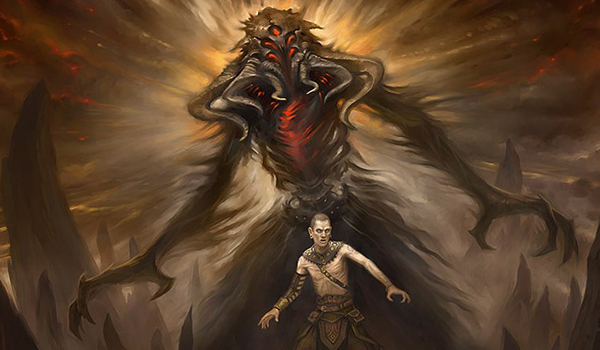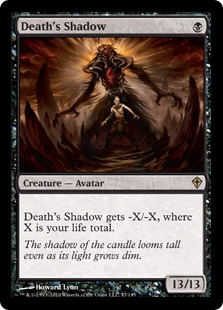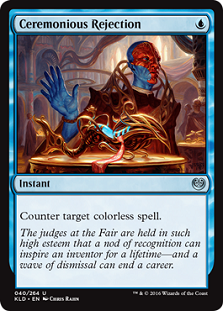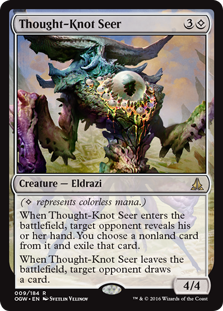Are you a Quiet Speculation member?
If not, now is a perfect time to join up! Our powerful tools, breaking-news analysis, and exclusive Discord channel will make sure you stay up to date and ahead of the curve.
I'm trying very hard not to say, "I told you so." Grixis Death’s Shadow, days after I touted it as the best deck to play heading into the competitive weekend, took down the SCG Open in Baltimore that I hoped on attending, crushed the field at GP Copenhagen, and took third place at Grand Prix Kobe. Out of the four events that happened last weekend (the above three, and Baltimore’s Sunday Modern Classic), Grixis Death’s Shadow won two events and took third in another. It probably would have crushed the Classic as well, but most of it’s pilots were probably still deep in the main event. For a writer, besides actually sitting down and doing well physically, results like these provide the next best thing: the sweet, sweet nectar of validation.

Today, we’re going to dive into the weekend’s events, with a focus on Grixis Death’s Shadow—why it did so well and where to go from here.
The Events
Rather than the traditional approach of analyzing each event individually, I think there’s enough data to look at each event as part of a whole. Usually, simultaneous events have different enough metagames and format characteristics that lumping them together would prove to be a mistake, but here, the results themselves tell a different story. What do I mean by that?
Take two hypothetical events, running side by side in different locations on the same weekend. One event might have two copies of a combo deck in the Top 8, with another in the Top 16, while the other might have just one copy in the Top 16, or none at all. It’s entirely possible that in the first event said deck just “got lucky,” and was able to convert a couple extra Top 16 positions into strong Top 8 finishes. More likely, however, is that Event A presented more favorable conditions for said combo deck to succeed, while Event B presented a more hostile field, potentially with more consistent hate.
So, with that in mind, what initial broad conclusions can we draw from the weekend’s results? The goal here, of course, is somewhere around equal parts figuring out "what happened” and “what other people will take away from the results." How the format reacts could fall anywhere on the spectrum, like when people panic after Skred spikes an event, or they see a major archetype shut out of the Top 8. As is always the case, analysis is a murky business.
Takeaways
 Grixis Death’s Shadow dominated. It won Copenhagen, and put another in the Top 16. Kobe had one take 3rd, with another in the Top 16. Baltimore had one win the Open, another in the Top 8, and one more in the Top 16. No copies in the Classic, but again, I read that as a positive, as many of those players were probably still playing in the Open on Sunday.
Grixis Death’s Shadow dominated. It won Copenhagen, and put another in the Top 16. Kobe had one take 3rd, with another in the Top 16. Baltimore had one win the Open, another in the Top 8, and one more in the Top 16. No copies in the Classic, but again, I read that as a positive, as many of those players were probably still playing in the Open on Sunday.
We talked last week about removal being good again, and alluded to Vizier Company as a deck that appeared to take advantage of an apparent lack of removal in the format, thus necessitating its return. In that regard, Grixis Death’s Shadow clearly delivered. Burn was absent from Copenhagen, Kobe, and the Baltimore Open Top 8s, and Affinity was absent from Copenhagen and Baltimore. Players came ready to kill creatures, I'm guessing due in large part to these deck’s successes leading up to the event and Vizier Company’s perceived strength on the eve of the tournaments. While most players were busy targeting small, cheap threats, Grixis Death’s Shadow found itself positioned excellently to join in on attacking the top decks, while dodging the hate itself.
 Further evidence that reactive strategies filled with removal were a strong choice last weekend was present in the form of control decks. Basically non-existent before this weekend’s events, control came back in a big way. Jeskai Control and Four-Color Control split the finals of the Classic, but more importantly, control put up strong numbers at Kobe as well. In a true example of a rock-paper-scissors metagame, control capitalized on the plentiful midrange decks that showed up as well. Without midrange decks to beat up on, control wouldn’t have done well this weekend. We saw this before the event, as midrange found its numbers disappearing thanks to Eldrazi Tron. And, of course, midrange wouldn’t have found success without plentiful targets for its removal on Saturday. As is clearly shown here, it’s often a good idea to play a deck that beats the “best decks,” but playing a deck that beats those decks can be a strong option as well.
Further evidence that reactive strategies filled with removal were a strong choice last weekend was present in the form of control decks. Basically non-existent before this weekend’s events, control came back in a big way. Jeskai Control and Four-Color Control split the finals of the Classic, but more importantly, control put up strong numbers at Kobe as well. In a true example of a rock-paper-scissors metagame, control capitalized on the plentiful midrange decks that showed up as well. Without midrange decks to beat up on, control wouldn’t have done well this weekend. We saw this before the event, as midrange found its numbers disappearing thanks to Eldrazi Tron. And, of course, midrange wouldn’t have found success without plentiful targets for its removal on Saturday. As is clearly shown here, it’s often a good idea to play a deck that beats the “best decks,” but playing a deck that beats those decks can be a strong option as well.
The New Standard?
Taking a look at the highest-finishing lists, we see a convergence of card choices for Death's Shadow, which appears to have reached a new consensus build. Here's the deck Mattia Rizzi used to take down GP Copenhagen, just one to two cards off of Brad Nelson's winning list from SCG Baltimore.
Grixis Death's Shadow, by Mattia Rizzi (1st, GP Copenhagen 2017)
I knew going into the event that my maindeck would be several cards off the accepted standard in Grixis Death's Shadow builds. We talked last week about paper events lagging behind MTGO results—that’s often true to an extent with metagames, but even more so with decklists. Usually (but not always), top performing decks are often the same 60-card prototypes those of us familiar with online lists have seen before, with a few correct sideboard changes rounding things out.
 That, of course, is exactly what we’re seeing here. Grixis Death’s Shadow is already set when it comes to taking down creature decks, and with Ceremonious Rejection, Collective Brutality and Surgical Extraction in the sideboard to handle Eldrazi Tron, Burn, and Dredge, respectively, the deck has a ton of options to fight most of the top decks in post-board games. Stubborn Denial does double duty against spell-based combo decks, control strategies, and removal on our threats, and is a strict upgrade to Dispel (an already excellent blue sideboard card) if we play our cards right.
That, of course, is exactly what we’re seeing here. Grixis Death’s Shadow is already set when it comes to taking down creature decks, and with Ceremonious Rejection, Collective Brutality and Surgical Extraction in the sideboard to handle Eldrazi Tron, Burn, and Dredge, respectively, the deck has a ton of options to fight most of the top decks in post-board games. Stubborn Denial does double duty against spell-based combo decks, control strategies, and removal on our threats, and is a strict upgrade to Dispel (an already excellent blue sideboard card) if we play our cards right.
When you take into account that Grixis Death’s Shadow’s representation could have been even higher, had its pilots not been split among Jund (and even a couple Abzan) builds, it’s clear to see that the stars aligned for the archetype this weekend. Vizier Company’s timely success clearly helped out the archetype, as it’s easy to believe that some players chose to pick up the deck, which played right into Grixis’ plans.
 There were plenty of targets on people’s minds going into the weekend, but thanks to that representation split across the various color combinations, it's clear that Death’s Shadow was not one of them. No, the primary enemies in everyone’s minds were small creatures, Dredge, Storm, and Eldrazi Tron. A proactive, consistent, powerful maindeck, with excellent sideboard spells for dedicated matchups all worked together to help propel Death's Shadow into the prime spot to take this past weekend by storm, but it couldn’t have done anything without the format playing along.
There were plenty of targets on people’s minds going into the weekend, but thanks to that representation split across the various color combinations, it's clear that Death’s Shadow was not one of them. No, the primary enemies in everyone’s minds were small creatures, Dredge, Storm, and Eldrazi Tron. A proactive, consistent, powerful maindeck, with excellent sideboard spells for dedicated matchups all worked together to help propel Death's Shadow into the prime spot to take this past weekend by storm, but it couldn’t have done anything without the format playing along.
Moving forward, Death’s Shadow will be back on everyone’s radar, but how will the format choose to react? Before, midrange and control decks devolved into an arms race of value to fight Death’s Shadow’s multiple angles of attack, and fast linear strategies pounced on the opportunity. Will the format react accordingly, learn from the past mistakes, and take a different turn? Or will we find ourselves in a circle of metagame iterations, chasing our own tail? It’s too early to tell, but for now, I know what I’ll be playing.
Thanks for reading!




